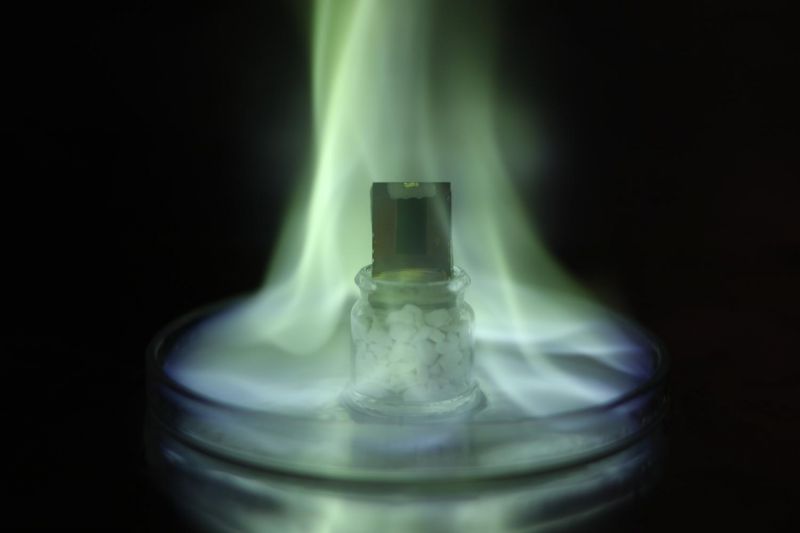Methylammonium lead iodide is a metal – organic substance in the perovskite crystal structure that gathers light effectively and conducts electricity well, both vital qualities in solar cells. But, the lifetime of solar cells prepared of metalorganic perovskites has proven to be exceedingly short compared to cells prepared of silicon.
Now scientists from Aalto University, Uppsala University and Ecole polytechnique federale de Lausanne in Switzerland have managed to enhance the long – term stability of solar cells prepared of perovskite using ‘random network’ nanotube films introduced under the leadership of Lecturer Esko Kauppinen at Aalto University. Random network nanotube layers are layers made of single – walled carbon nanotubes that in an electron microscope image appear like spaghetti on a plate.
“In a conventional perovskite solar cell, the hold conductor layer comprises of organic substance and, on top of it, a sleek layer of gold that conveniently begins to disintegrate and diffuse through the entire solar cell structure. We substituted the gold and also part of the organic substance with films prepare of carbon nanotubes and accomplished good cell stability in 60 degrees and full one sun illumination conditions explains Kerttu Aitola, who defended her doctoral dissertation at the Aalto University and now works as a scientist at Uppsala University.

In the study, thick black layers with high conductivity were employed in the back contact of the solar cell where light does not need to get through. As per Aitola, nanotube layers can also be prepared sleek and transparent, which could make it feasible to use them as the front contact of the cell, in other words as the contact that allows light pass through them.
“The solar cells were made in Uppsala and the enduring stability estimate was carried out at EPFL. The head of the solar cell group at EPSL is Lecturer Michael Gratzel, who was awarded the Millenium Prize 2010 for dye – sensitized solar cells, on which the perovskite solar cells also partly based on,” confirm Aitola.
The lifespan of solar cells prepared of silicon is 20 – 30 years and their industrial production is highly efficient. Still, substitutes are required as reducing the silicon dioxide in sand to silicon consumes a vast volume of energy. It is measured that a silicon solar cell required two to three years to manufacture the energy was employed to produce it, whereas a perovskite solar cell would just require two or three months to do it.
“Perovskite solar cell is also alluring because its efficacy, in other words how effectively it alters sunlight energy into electronic energy, has very swiftly reached the level of silicon solar cells. The substituting solar cells are even more appealing of their numerous application areas. Flexible solar cells have until now been prepared on conductive plastic. “Flexible and light solar cells would be convenient to integrate in buildings and you could also hang them in windows by yourself,” says Aitola.
Filed Under: News


Questions related to this article?
👉Ask and discuss on Electro-Tech-Online.com and EDAboard.com forums.
Tell Us What You Think!!
You must be logged in to post a comment.